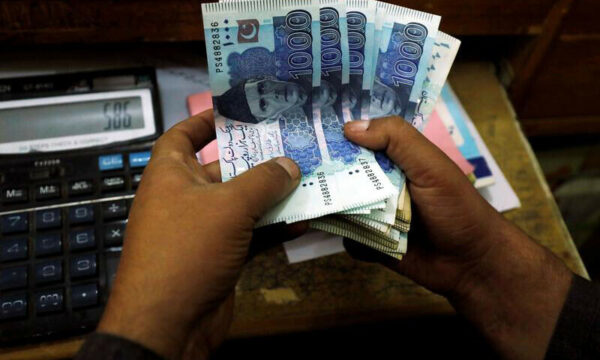The local currency closed to RS229.82 per dollar, showed data shared by the State Bank of Pakistan (SBP). This is equivalent to a 0.71 percent depreciation. The Secretary General of the Association of Pakistan Exchanges Companies (ECAP), Zafar Paracha, said there were several factors behind the decrease in rupee, including an expected increase in the import law project after the devastating floods. However, one of the main reasons was that the friendly countries, which had promised to provide financing once the deposit of the International Monetary Fund (IMF) was received, had not yet fulfilled their commitments, he said.
“They seem reluctant to do it due to the political situation, corruption and our past record of not returning money,” Paracha said. “Our expectation that the rupee won RS10-20 after the IMF deposit was received did not happen. We receive $ 1.16 billion of the IMF that is not adequate. ” The country needed to make payments amount to $ 40 billion in the current fiscal year, said the secretary general of ECAP. He added that while the government said previously that it had made arrangements to meet all financing needs, it now seemed that its statements have changed.
“The Minister of Finance, Miftah Ismail, seemed stressed during his preschooler on Saturday. He said the pressure on the rupee will remain. “It seems that [only] we delay the predetermined value and we are moving towards him again. The government does not address problems, especially the smuggling of currency and goods, ”he said. TresMark Komal Mansoor’s research manager said that while imports had temporarily suspended, the problem had changed to the smuggling of Afghanistan against cash payments. This has increased the appetite for dollars in the open market, he said.
“The difference between interbank and open markets is to create an incentive for foreign currency accounts (FCy) to withdraw USD and sell in the open market. Ultra low interest in currency accounts is not helping to attract fresh FCy deposits. “The director of Mettis Global, Saad Bin Naseer, said that the rupee was under pressure and, consequently, the banks had stopped opening credit letters for unnecessary imports. He pointed out that there was a shock on the supply side and cotton crops had been dragged due to floods due to which the load in the checking account would be “very high.”
He suggested that the government should administer the export payments ensuring that the dollars become rupees the same day the export shipment is sent. He added that the government could recover $ 5-6 billion that turned abroad “very soon” if this policy was introduced. The rupee has been losing ground against the dollar since September 2. He fell at RS9.2 during the last week to close at RS228.18. According to financial data and the Global Mettis analysis portal, the value of the rupe has decreased 26.37pc in the last 52 weeks. He fell to a minimum record of 239.94 on July 28.
